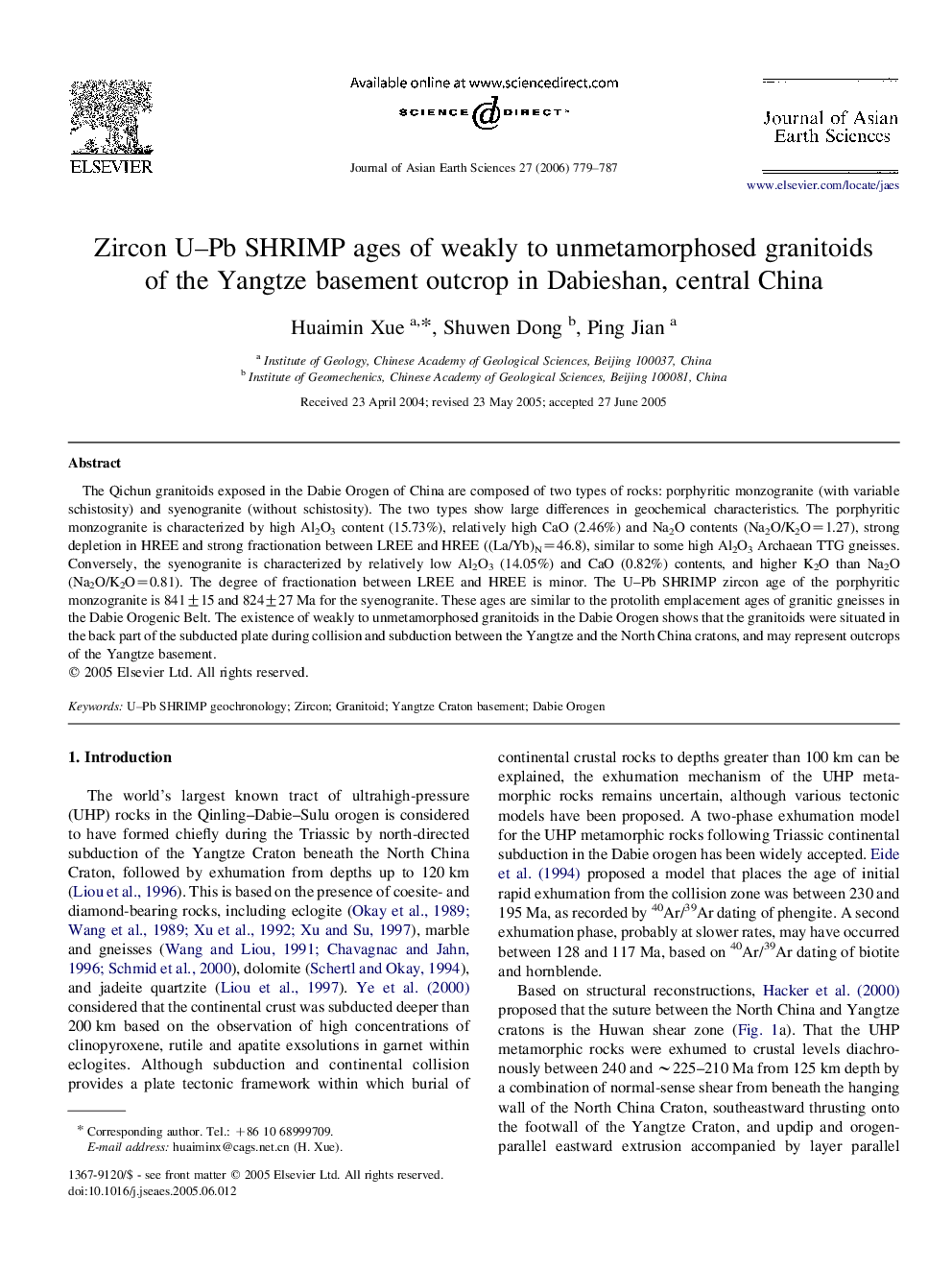| Article ID | Journal | Published Year | Pages | File Type |
|---|---|---|---|---|
| 4732853 | Journal of Asian Earth Sciences | 2006 | 9 Pages |
The Qichun granitoids exposed in the Dabie Orogen of China are composed of two types of rocks: porphyritic monzogranite (with variable schistosity) and syenogranite (without schistosity). The two types show large differences in geochemical characteristics. The porphyritic monzogranite is characterized by high Al2O3 content (15.73%), relatively high CaO (2.46%) and Na2O contents (Na2O/K2O=1.27), strong depletion in HREE and strong fractionation between LREE and HREE ((La/Yb)N=46.8), similar to some high Al2O3 Archaean TTG gneisses. Conversely, the syenogranite is characterized by relatively low Al2O3 (14.05%) and CaO (0.82%) contents, and higher K2O than Na2O (Na2O/K2O=0.81). The degree of fractionation between LREE and HREE is minor. The U–Pb SHRIMP zircon age of the porphyritic monzogranite is 841±15 and 824±27 Ma for the syenogranite. These ages are similar to the protolith emplacement ages of granitic gneisses in the Dabie Orogenic Belt. The existence of weakly to unmetamorphosed granitoids in the Dabie Orogen shows that the granitoids were situated in the back part of the subducted plate during collision and subduction between the Yangtze and the North China cratons, and may represent outcrops of the Yangtze basement.
